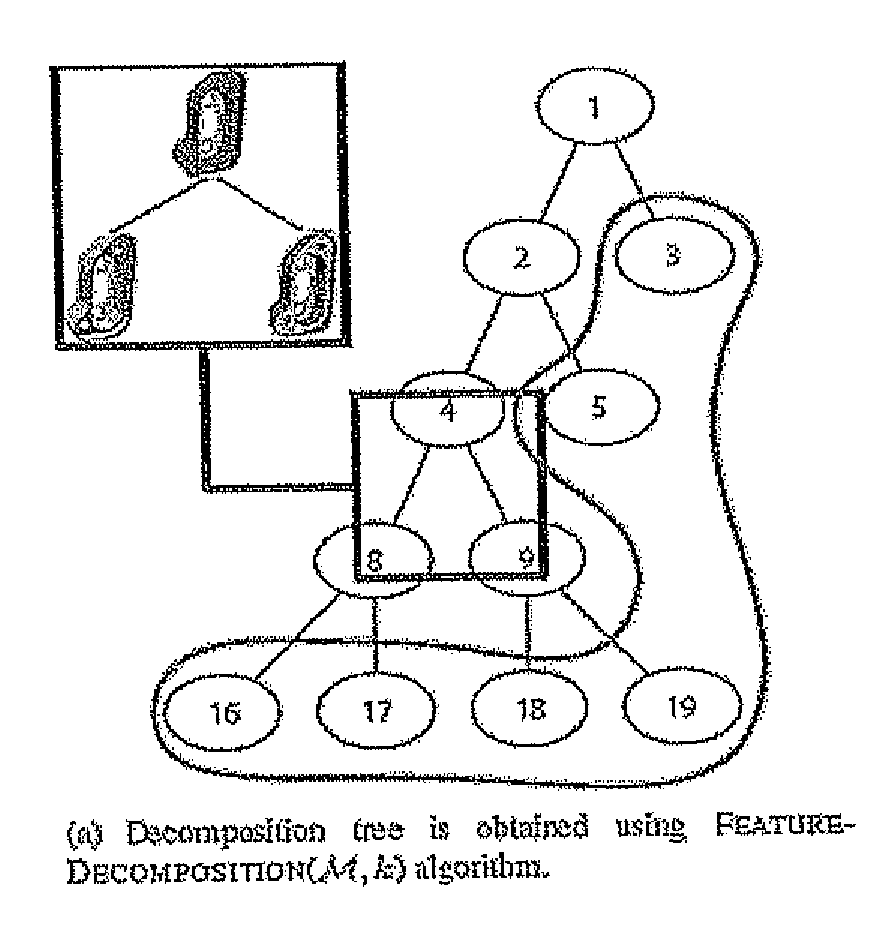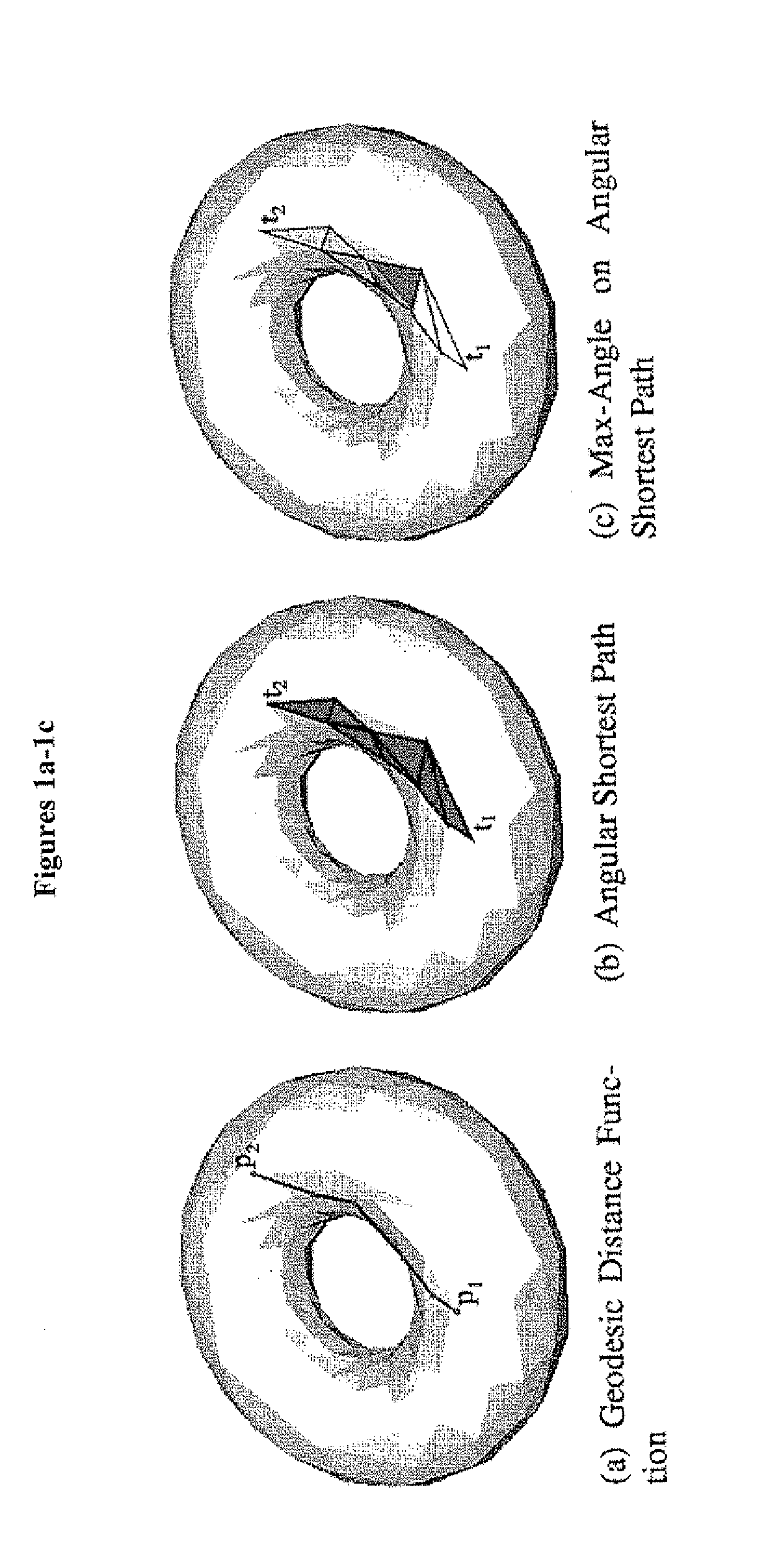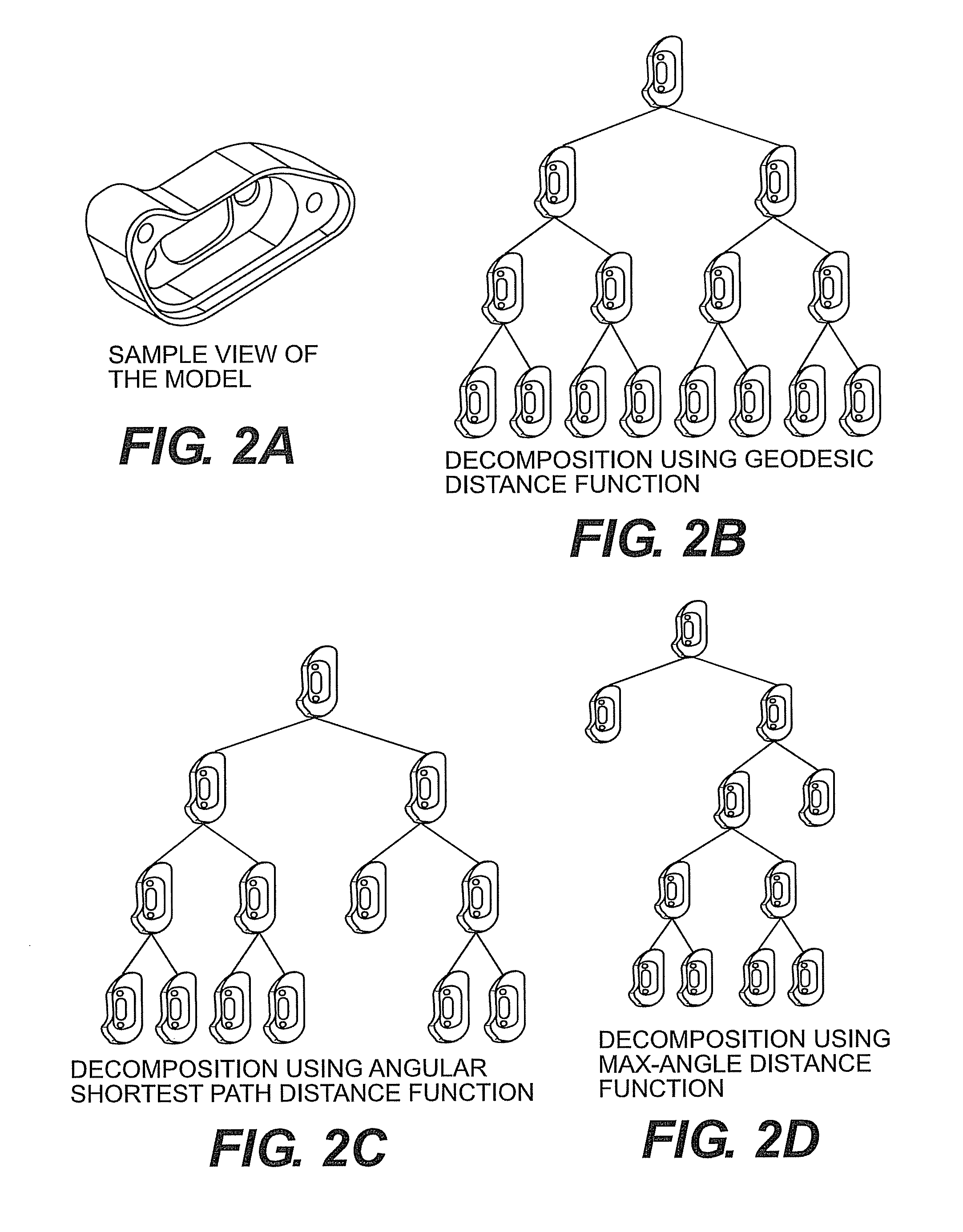Multi-scale segmentation and partial matching 3D models
a 3d model and multi-scale technology, applied in the field of solid model classification and searching, can solve the problems of wasting time, unable to obtain a “complete” scan, and rarely complete acquired data,
- Summary
- Abstract
- Description
- Claims
- Application Information
AI Technical Summary
Benefits of technology
Problems solved by technology
Method used
Image
Examples
Embodiment Construction
)
[0045]This invention develops a feature decomposition method that can be parameterized and is tuned to extract local feature configurations of engineering significance. The present invention also addresses the problem of partial matching in the context of acquired data and presents an end-to-end methodology for evaluation.
[0046]It is common in engineering communities for the term, “feature” to be used to refer to machining features (i.e., holes, pockets, slots) or other local geometric or topological characteristics of interest, depending on the domain (i.e., assembly surfaces, molding lines, etc). In the context of this patent application, “feature” will be used as an intrinsic property of the 3D shape, which may encompass local geometry and topology. Depending on the choice of function to parameterize the multi-scale decomposition, these local features could correspond to design or manufacturing operations, machining features or assembly surfaces, etc.
I. Sub-Space Clustering and ...
PUM
 Login to View More
Login to View More Abstract
Description
Claims
Application Information
 Login to View More
Login to View More - R&D
- Intellectual Property
- Life Sciences
- Materials
- Tech Scout
- Unparalleled Data Quality
- Higher Quality Content
- 60% Fewer Hallucinations
Browse by: Latest US Patents, China's latest patents, Technical Efficacy Thesaurus, Application Domain, Technology Topic, Popular Technical Reports.
© 2025 PatSnap. All rights reserved.Legal|Privacy policy|Modern Slavery Act Transparency Statement|Sitemap|About US| Contact US: help@patsnap.com



